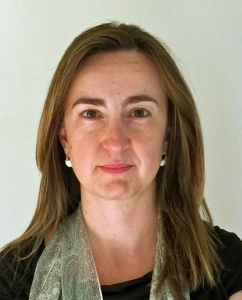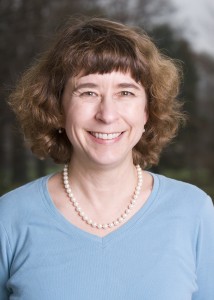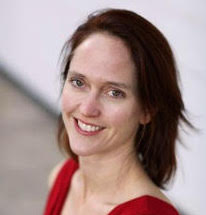
Sera Cremonini, Lehigh University
Sera Cremonini is an assistant professor at Lehigh University, working on theoretical particle physics and quantum gravity. She received her Ph.D. from Brown University and then did postdoctoral research at the University of Michigan, followed by a joint research position between Texas A&M and Cambridge University. Her work spans different areas of string theory, quantum field theory and cosmology. She is particularly interested in probing the quantum-mechanical nature of gravity, the microscopic structure of black holes and the very beginning of the universe. More recently she has also been exploring fascinating connections between string theory techniques and the behavior of unconventional, strongly interacting quantum systems such as high temperature superconductors.

Michelle Dolinski, Drexel University
I first started doing high energy physics research as an undergraduate at Harvard, then moved to experimental neutrino physics in graduate school at the University of California, Berkeley. I was a postdoctoral researcher at Stanford University for four years, and I joined the Drexel University Department of Physics in 2012. My research focuses on the properties of neutrinos. I am also interested in physics education and outreach, including making the physics community more inclusive.

Suzanne Amador Kane, Haverford College
A native of south-central Pennsylvania, Suzanne Amador Kane received her B.S. in Physics from MIT and her M.D. and PhD in Applied Physics from Harvard University. After performing postdoctoral research in biophysics at the University of Pennsylvania, she joined the faculty of Haverford College where she is currently a Professor of Physics and the coordinator of their Biochemistry and Biophysics program, which she helped found. Her research interests lie at the interface of biological, soft condensed matter and statistical physics. Recent projects have included studies of how animals use visual guidance during predator pursuit and prey evasion, the biomechanics of peacock mating displays, the kinematics of raptor take-off flight, how birds signal by calling during flocking, computer modeling of bacterial diversity in ecosystems, and how modified proteins form biologically-inspired nanostructures. This work is conducted with undergraduate coauthors and off-campus collaborators, using a combination of experimental techniques, including high-speed and stereometric 3D video, bioacoustics and computational modeling. Her teaching activities have included writing a textbook about medical physics, creating biological physics modules across the physics curriculum, and revising the introductory physics curriculum in response to new prehealth student learning goals. Most recently, she has been working on ways to improve access to physics courses for students who are blind/have low vision.

Amy Graves, Swarthmore College
Dr. Amy Graves is Professor of Physics at Swarthmore College in Pennsylvania. She went to an all girl’s school in Ohio, then did a double major in physics and mathematics at Williams College. (She spent her junior year abroad.) She got a PhD in physics from M.I.T. After a couple of research jobs, she began teaching at Swarthmore. She’s been Department Chair, and the Chair of her Division (Computational Physics) of the American Physical Society. She does research in a field called “soft condensed-matter physics”, working with Swarthmore undergraduates. Their research is computer based; creating simulations of atoms, molecules, idealized particles, and recently … people! She also does research on issues of gender and science. Dr. G and her husband LG have a blended family of five children aged 19-37, four grandchildren, two dogs, a rabbit, a fish tank, and some rats.

Elizabeth McCormack, Bryn Mawr College
Professor McCormack received her bachelor’s degree in astronomy and physics from Wellesley College and her Ph.D. in physics from Yale University. She was an Alexander Hollaender Distinguished Postdoctoral Fellow and a staff physicist at Argonne National Laboratory before joining the faculty at Bryn Mawr College in 1995. Her research interests include fundamental aspects of molecular excited state-structure and dynamics using a variety of laser spectroscopy techniques. She has published over 30 peer-reviewed journal articles and is a Fellow of the American Physical Society. She was a National Science Foundation CAREER award recipient and a Fulbright Senior Research Scholar and Visiting Professor at the University of Paris XI. She serves on the Board of Directors of The Research Corporation for Science Advancement, the Board of Advisors to Project Kaleidoscope, and is a consultant to the Scientific Equipment Program at the Sherman Fairchild Foundation.
Diane Turnshek, Carnegie Mellon University
 Diane Turnshek is a lecturer in the Department of Physics at Carnegie Mellon University and the Department of Physics and Astronomy at the University of Pittsburgh. She has published hard science fiction with a focus on space colonization and first contact. Her love of both astronomy and science fiction led her to crew the Mars Desert Research Station near Bryce Canyon, UT in 2012 where she turned her attention to dark sky advocacy. Her fight against light pollution has taken many forms, including a giving a TEDxPittsburgh talk, researching residential dark sky shielding for the DIYer, curating a series of art gallery showings focused on space art, traveling to Washington D.C. to speak with senators and congressmen about basic research funding. She is a 2015 Dark Sky Defender award recipient, recognized by the International Dark-Sky Association for her contribution to the fight against light pollution.
Diane Turnshek is a lecturer in the Department of Physics at Carnegie Mellon University and the Department of Physics and Astronomy at the University of Pittsburgh. She has published hard science fiction with a focus on space colonization and first contact. Her love of both astronomy and science fiction led her to crew the Mars Desert Research Station near Bryce Canyon, UT in 2012 where she turned her attention to dark sky advocacy. Her fight against light pollution has taken many forms, including a giving a TEDxPittsburgh talk, researching residential dark sky shielding for the DIYer, curating a series of art gallery showings focused on space art, traveling to Washington D.C. to speak with senators and congressmen about basic research funding. She is a 2015 Dark Sky Defender award recipient, recognized by the International Dark-Sky Association for her contribution to the fight against light pollution.

Andrea Lommen, Franklin and Marshall College
I’ve never just been a physicist. I’ve always been a dancer, and now I’m a mom and a yoga teacher. I believe that makes me a better physicist. I have degrees from several schools (Carleton College, U. Penn, U.C. Berkeley) and I’m now chair of the physics department at Franklin and Marshall College. One thing not too many people know about me is that my first graduate school experience was a bust. I really didn’t like it, and I quit and moved to New York and danced professionally for a year, something I had always dreamt of. When I went back to graduate school (at Berkeley) I felt much clearer about my goals. My biggest piece of advice for young women is to be assertive and clear about your boundaries (e.g. when you’re going to work and when you’re not going to work), and people will respect you for them.